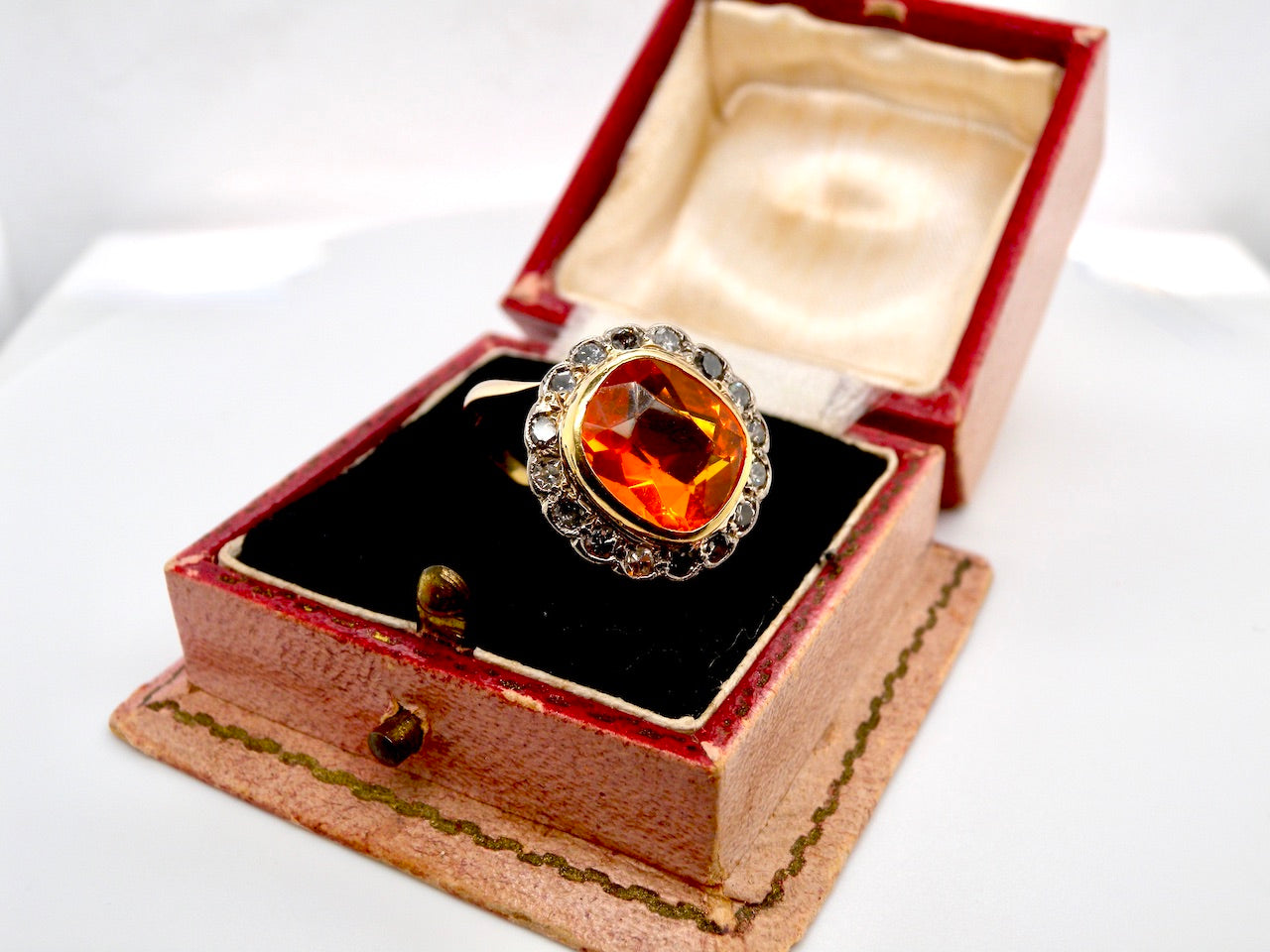Emeralds, with their captivating green allure, have long held a prominent place in the world of fine jewellery. During the Art Deco period of the 1920s and 1930s, these gemstones found an extraordinary stage, harmonizing with the era’s bold geometric designs and luxurious sensibilities. This distinctive style, born amidst a wave of modernity and cultural transformation, elevated emeralds into iconic symbols of sophistication. Let’s dive into the unique qualities of emeralds and explore how they became integral to the Art Deco movement, creating a legacy that continues to resonate today.
The Distinctive Charm of Emeralds
Emeralds, a variety of the mineral beryl, derive their signature hue from trace elements like chromium or vanadium, resulting in a spectrum of green tones—from deep forest shades to lighter, more vibrant greens. Unlike the flawless clarity prized in diamonds, emeralds often feature natural inclusions, poetically termed "jardin" (French for garden), which lend each stone a singular character. With a Mohs hardness of 7.5 to 8, they are softer than many gemstones, requiring careful handling and cutting to preserve their beauty. This inherent uniqueness made emeralds a compelling choice for the Art Deco era, where individuality met precision.
In the 1920s and 1930s, the rich, saturated color of emeralds provided a striking counterpoint to the period’s fascination with modernity. Sourced primarily from Colombia, Egypt, and later Zambia, these gems carried an air of exoticism and history, appealing to a society eager to celebrate both the past and the future. Their vivid presence in jewellery designs of the time underscored a broader trend: the embrace of colored gemstones as equals to the traditionally dominant diamond.
Art Deco: A Revolutionary Aesthetic
The Art Deco movement emerged in the aftermath of World War I, reflecting a global shift toward progress, luxury, and artistic experimentation. Named after the 1925 Exposition Internationale des Arts Décoratifs et Industriels Modernes in Paris, this style rejected the organic curves of Art Nouveau in favor of symmetry, sharp angles, and a sleek, machine-age aesthetic. Jewellery became a canvas for these ideals, incorporating materials like platinum valued for its strength and luminous finish and innovative settings that maximized sparkle and structure for art deco vintage rings.
Emeralds thrived within this framework. Their bold green hue complemented the era’s love of contrast, often paired with the brilliance of diamonds or the cool sheen of platinum. Leading houses such as Cartier, Boucheron, and Van Cleef & Arpels embraced emeralds, cutting them into geometric shapes rectangles, hexagons, or smooth cabochons to align with the architectural influences of the time. Long sautoir necklaces, cocktail rings, and elaborate brooches showcased emeralds as focal points, their color evoking both opulence and a connection to nature amidst the urban sophistication of the Jazz Age.
Iconic Designs and Techniques
Art Deco jewellery featuring emeralds exemplified the period’s technical and artistic advancements. Designers employed precise calibré cuts small, uniformly shaped stones to create seamless borders or patterns, enhancing the gem’s integration into intricate compositions. Pavé and millegrain settings, where tiny beads of metal secured the stones, added texture and protected the relatively delicate emeralds while amplifying their visual impact. The result was a polished yet dynamic look that mirrored the era’s dual emphasis on luxury and innovation.
One standout example is Cartier’s "Tutti Frutti" collection, which combined carved emerald beads often imported from India’s Mughal tradition with sapphires and rubies in vibrant, fruit-inspired motifs. These pieces blended Eastern influences with Western modernity, embodying the globalized spirit of the 1920s. Similarly, emerald drop earrings and tiered necklaces became signatures of the time, their movement and color capturing the exuberance of the flapper era. Such designs remain highly sought after by collectors, a testament to their enduring appeal.
The Lasting Legacy of Emeralds in Art Deco
The fusion of emeralds and Art Deco aesthetics produced jewellery that transcends its historical moment. The gemstone’s rich green evokes the glamour of the Roaring Twenties think lavish Gatsby-esque parties or the silver screen’s golden age while the clean lines and structured settings align with contemporary tastes. Today, these pieces fetch significant sums at auction, prized for their craftsmanship and cultural significance. Modern designers often draw inspiration from this era, pairing emeralds with minimalist or retro-inspired settings to echo the Art Deco ethos.
Emeralds in Art Deco jewellery represent more than mere decoration; they encapsulate a pivotal chapter in design history. Their vivid color and natural imperfections, set against the precision of the period’s style, create a compelling tension a balance of tradition and innovation that continues to captivate. As symbols of an era defined by reinvention, these treasures affirm the timeless power of beauty crafted with purpose.
You May Also Like: Emerald - The Birthstone For May



